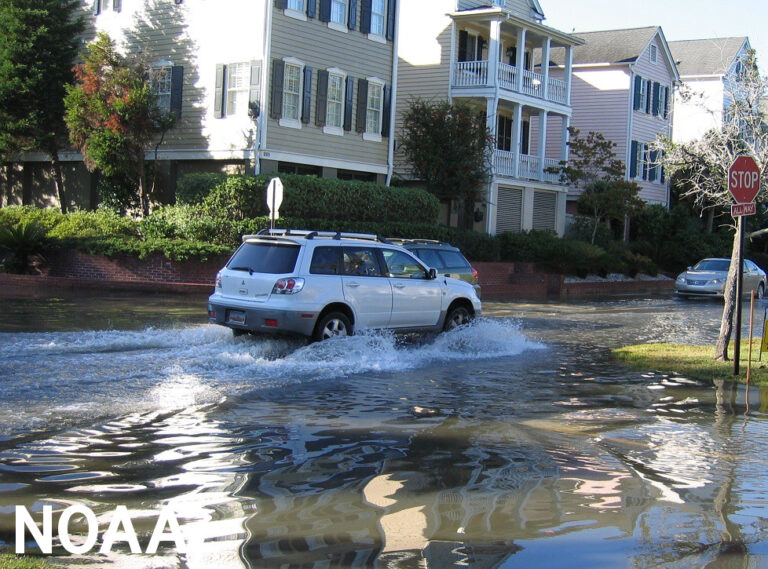Coastal communities across the US saw record-setting high-tide flooding last year – a trend that is expected to continue into 2022 and beyond without improved flood defenses, according to a new NOAA report.
The report, 2021 State of High Tide Flooding and Annual Outlook, documents changes in high-tide flooding patterns from May 2020 to April 2021 at 97 NOAA tide gauges along the US coast, and provides a flooding outlook for these locations through to April 2022, as well as projections for the next several decades.
According to the report, US coastal communities saw twice as many high tide flooding days than they did 20 years ago. Along the Southeast Atlantic and Gulf coastlines, 14 locations set or tied records where rapidly increasing trends in high-tide flooding have emerged.
“NOAA’s tide gauges show that 80% of locations where we collect data along the Southeast Atlantic and Gulf coast are seeing an acceleration in the number of flood days,” said Nicole LeBoeuf, director of NOAA’s National Ocean Service. “NOAA is committed to working with coastal communities to provide the information and tools they need to tackle the problem of high-tide flooding, both now and in the coming years as sea levels continue to rise.”
“High tide flooding is becoming common and damaging in many parts of the US,” added William Sweet, an oceanographer for NOAA’s National Ocean Service and lead author of the report. “Many coastal communities are saddled with this problem, so NOAA is working to provide them with the kinds of information needed to anticipate, prepare for, and respond to increasingly frequent high tide flooding.”
Sweet and his co-authors project that from May 2021 to April 2022, the national high tide flood frequency is expected to continue to accelerate, with US coastal communities seeing on average three to seven days of flooding in the coming year, as compared to 2-6 days projected just last year. Regionally, locations along the Atlantic and Gulf coasts may experience even more days of flooding each year.
By 2030, long-term projections show 7-15 days per year of high-tide flooding for coastal communities nationally. By 2050, that rises to 25-75 days. These long-term outlooks are based on the range of relative sea level rise, using two scenarios of the Fourth National Climate Assessment considered more likely to occur by 2030 and 2050 – Intermediate Low and Intermediate.



